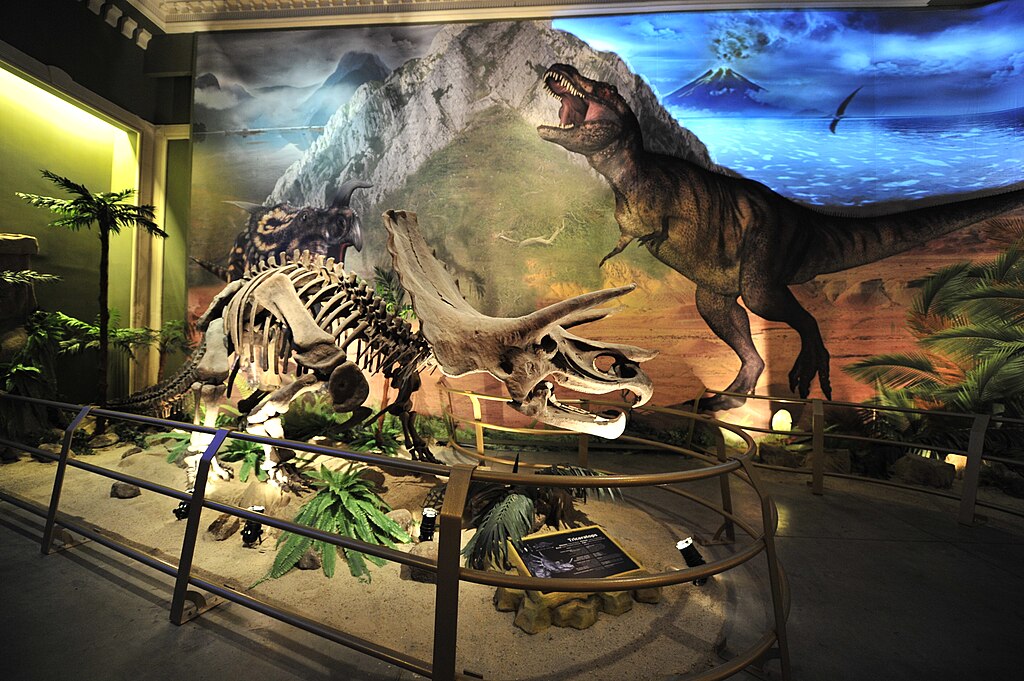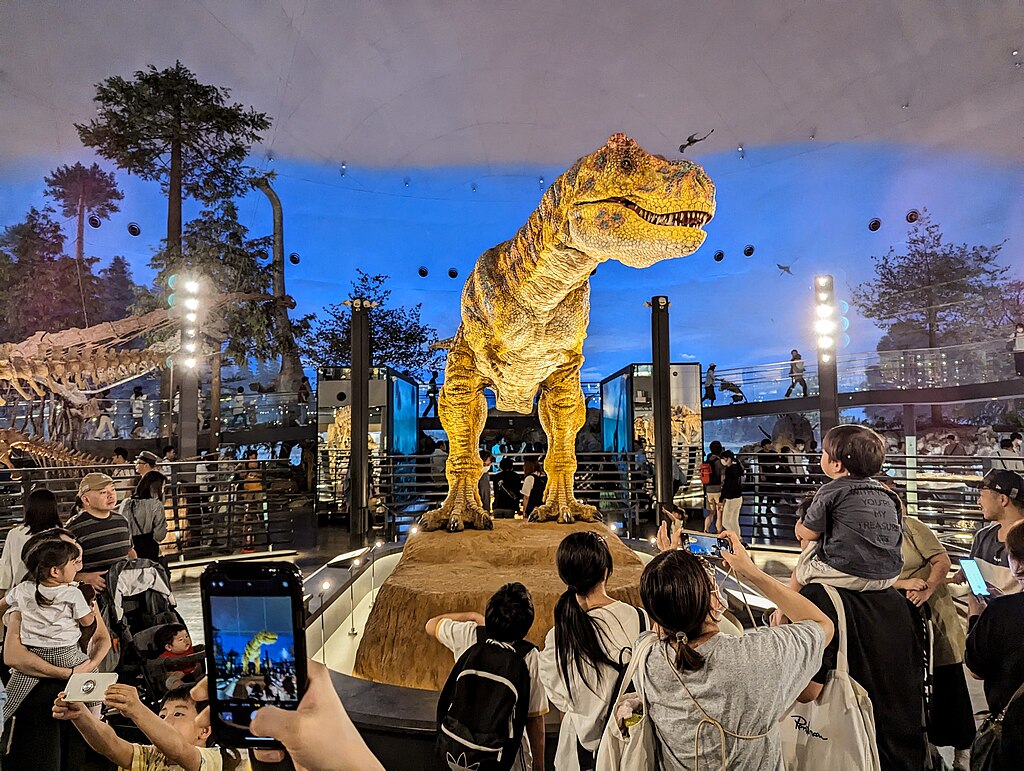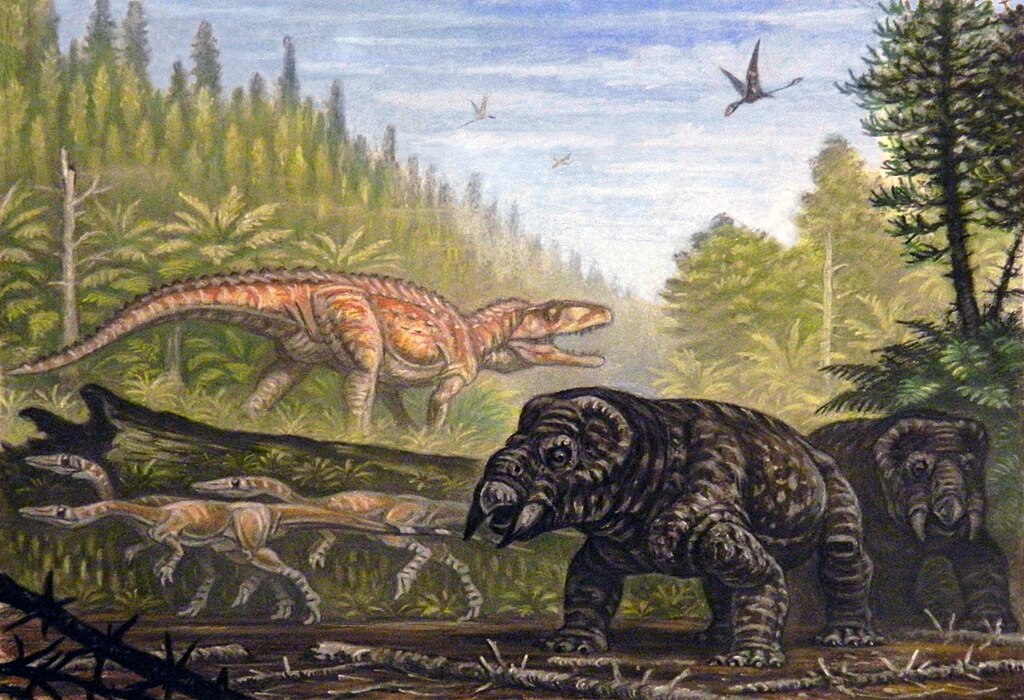While natural history giants like the American Museum of Natural History and London’s Natural History Museum receive millions of visitors annually, dinosaur enthusiasts can discover remarkable collections in lesser-known institutions around the globe. These hidden paleontological gems often house unique specimens, cutting-edge research facilities, and immersive exhibits that rival their famous counterparts. From remote desert locations to small-town treasures, these underappreciated dinosaur museums offer profound insights into prehistoric life without the overwhelming crowds. Let’s explore these paleontological wonders that deserve wider recognition among dinosaur enthusiasts and casual visitors alike.
Sauriermuseum Aathal, Switzerland

Nestled in a former textile factory near Zurich, the Sauriermuseum Aathal stands as Switzerland’s largest dinosaur museum, yet remains relatively unknown to international visitors. Founded by paleontologist Hans-Jakob Siber, the museum showcases specimens primarily excavated by the museum’s own team from the famous Morrison Formation in Wyoming and Montana. Its crown jewel is “Aathal Stegosaurus,” one of the most complete stegosaurus skeletons ever discovered, displayed alongside Dakota, an exceptionally preserved mummified hadrosaur with fossilized skin impressions. The museum takes a distinctive hands-on approach, often allowing visitors to touch genuine fossils and observe active preparation work in the on-site laboratory. Unlike many larger institutions, Sauriermuseum Aathal maintains an intimate atmosphere where visitors might encounter the paleontologists who actually discovered the specimens on display.
Zigong Dinosaur Museum, China

Built atop one of the world’s richest dinosaur fossil deposits, the Zigong Dinosaur Museum in Sichuan Province deserves far more international recognition than it currently receives. Established in 1987, this museum houses over 40,000 specimens excavated from the immediate area, an unprecedented concentration that paleontologists have dubbed the “Dinosaur Hometown.” The museum’s signature display features eighteen complete dinosaur skeletons arranged in lifelike poses, including the massive Mamenchisaurus with its 35-foot neck – the longest of any known dinosaur. What makes Zigong particularly special is that it showcases dinosaur species endemic to Asia that rarely appear in Western museums, offering visitors glimpses of Huayangosaurus, Xiaosaurus, and Gigantspinosaurus. The museum’s location directly above the fossil beds creates an unusual context where visitors can observe fossils in their original geological setting through specially designed viewing windows.
Gondwana Prehistoric Museum, Argentina

Located in the remote Patagonian town of Plaza Huincul, the Gondwana Prehistoric Museum houses some of the largest dinosaur specimens ever discovered, yet remains overlooked by most international tourists. The museum’s centerpiece is the original skeleton of Argentinosaurus huinculensis, potentially the largest dinosaur that ever lived, estimated at 30-40 meters long with a weight possibly exceeding 80 tons. Beyond its impressive size, what makes Gondwana special is its focus on the unique evolutionary path of Southern Hemisphere dinosaurs that developed in isolation after the supercontinent Gondwana broke apart. Visitors can trace this divergent evolution through carefully curated exhibits that contrast Laurasian (Northern Hemisphere) and Gondwanan dinosaur development. The museum’s remote location actually enhances the experience, as paleontologists often welcome interested visitors into active dig sites in the surrounding badlands during certain seasons.
Jurassic Land Museum, Turkey

Istanbul’s Jurassic Land Museum defies expectations as one of the most technologically advanced dinosaur museums despite its relative obscurity on the international stage. Spanning 10,000 square meters within the Forum Istanbul shopping complex, this museum combines traditional paleontology with augmented reality and animatronic technology to create an immersive prehistoric experience. The museum features more than sixty full-size dinosaur replicas, including ten animatronic specimens that move and vocalize in response to visitor movements. What distinguishes Jurassic Land from similar entertainment-focused dinosaur exhibits is its scientific rigor – each display includes detailed information about the fossil evidence supporting reconstructions, and the museum maintains partnerships with Turkish universities for paleontological research. A standout exhibit explores dinosaur species discovered in Turkey’s Anatolia region, highlighting the country’s own paleontological heritage through interactive displays and genuine fossil specimens.
Fukui Prefectural Dinosaur Museum, Japan

Hidden in the mountains of central Japan, the Fukui Prefectural Dinosaur Museum stands as one of Asia’s most comprehensive paleontological institutions, yet remains relatively unknown outside Japan. Designed by renowned architect Kisho Kurokawa with a distinctive domed structure resembling a fossilized egg, this museum houses more than 40,000 specimens with a special focus on Fukuisaurus and other dinosaurs discovered in the region. The museum’s “Dino Laboratory” offers an unprecedented level of transparency, as visitors can watch paleontologists prepare actual fossils through glass walls while interactive screens explain the techniques being used. What truly separates Fukui from other dinosaur museums is its “Environmental Context” approach, where dinosaur exhibits are placed within meticulously recreated prehistoric ecosystems complete with contemporary plants, insects, and small mammals. The museum’s location near actual excavation sites allows for special summer programs where visitors can participate in guided fossil hunts in the surrounding hills.
Two Medicine Dinosaur Center, Montana, USA

While Montana’s Museum of the Rockies receives significant attention, the smaller Two Medicine Dinosaur Center in Bynum offers a more intimate and hands-on paleontological experience that serious dinosaur enthusiasts shouldn’t miss. Founded by paleontologists working in the fossil-rich Two Medicine Formation, this unassuming museum houses the first baby dinosaur fossils discovered in North America and the world’s longest dinosaur skeletal reconstruction at 137 feet. What makes Two Medicine exceptional is its “Paleontologist for a Day” program, where visitors without prior experience can join actual excavations and laboratory work under professional guidance. The museum specializes in dinosaur growth studies, with displays showing developmental sequences from hatchling to adult for several species, including Maiasaura, the “good mother lizard” first discovered in this region. The center’s remote location along the Rocky Mountain Front has preserved both the dig sites and the small-town museum from commercialization, maintaining an authentic scientific atmosphere rarely found in larger institutions.
Dinosaur Museum of Erlian, China

Located in Inner Mongolia near the Mongolian border, the Dinosaur Museum of Erlian stands in the heart of the fossil-rich Gobi Desert yet remains virtually unknown to Western travelers. This museum focuses exclusively on the Cretaceous period dinosaurs discovered in the surrounding Erlian Basin, home to some of the most significant paleontological discoveries of the 20th century. The collection includes exceptionally preserved specimens of Protoceratops, Velociraptor, and Oviraptor, including the famous “fighting dinosaurs” fossil showing a Velociraptor and Protoceratops locked in combat at the moment of their death. What distinguishes Erlian from other museums is its extensive collection of dinosaur eggs and nests, including rare embryonic remains that have revolutionized our understanding of dinosaur development. The museum’s remote location has preserved it from overwhelming tourism and maintained its close connection with local fossil sites, where museum staff continue to make significant discoveries that are quickly incorporated into the exhibits.
Lourinhã Museum, Portugal

Situated in a small coastal town north of Lisbon, the Lourinhã Museum houses one of Europe’s most important dinosaur collections, yet remains overshadowed by larger institutions. The museum’s significance stems from Portugal’s Late Jurassic fossil beds, which have yielded some of the most complete dinosaur specimens from this period in Europe, including Lourinhanosaurus and Dinheirosaurus. The crown jewel of the collection is a near-complete embryonic nest with some of the best-preserved dinosaur embryos ever found, displayed alongside the world’s largest collection of dinosaur eggs from the Late Jurassic period. What makes Lourinhã special is its “living laboratory” approach, where visitors can observe and interact with paleontologists engaged in active research within the museum. The museum has pioneered paleontological tourism in Portugal, operating guided tours to nearby cliffs where visitors regularly discover new fossils that contribute to the scientific collection.
Paleontological Research Institution, New York, USA

While overshadowed by New York City’s American Museum of Natural History, the Paleontological Research Institution (PRI) in Ithaca offers one of America’s most scientifically significant dinosaur collections in a more accessible setting. Founded in 1932 and affiliated with Cornell University, PRI houses over three million specimens with particular strength in comparative anatomy between modern and prehistoric species. The museum’s unique “Right Between the Eyes” exhibit allows visitors to compare the skull structures of Tyrannosaurus rex with its living descendants—birds—through touchable casts and interactive displays demonstrating evolutionary connections. What distinguishes PRI is its open collections policy, where serious amateurs and students can access research specimens not on public display by appointment. The institution maintains the most comprehensive publicly accessible paleontological library in the United States, and visitors interested in deeper learning can arrange specialized tours focused on particular aspects of dinosaur biology or regional paleontology.
Dinosaur Discovery Museum, Wisconsin, USA

Housed in a repurposed historic post office in Kenosha, the Dinosaur Discovery Museum has established itself as North America’s leading institution focused exclusively on the meat-eating theropod dinosaurs and their evolutionary connection to birds. While modest in size, this museum contains the largest collection of theropod skeleton casts in the United States, arranged in revolutionary evolutionary sequences that illustrate the transition from dinosaurs to modern birds. The museum’s “Dinosaurs to Birds” exhibit features specimens arranged along actual cladistic lines, with anatomical features highlighted to show evolutionary relationships rather than simple chronological or size-based arrangements. What makes the Dinosaur Discovery Museum special is its partnership with the Carthage Institute of Paleontology, which operates a visible laboratory where visitors can watch technicians prepare actual fossils recovered from the Hell Creek Formation in Montana and South Dakota. The museum offers unique “Touch a Real Dinosaur” sessions where visitors can handle genuine 65-million-year-old fossils under staff supervision.
Museu da Lourinhã, Portugal

Often confused with the aforementioned Lourinhã Museum, but actually a separate institution, the Museu da Lourinhã focuses specifically on dinosaur embryology and reproductive biology based on the region’s unprecedented collection of fossil eggs and nests. Founded by amateur paleontologist Horácio Mateus, whose discoveries transformed our understanding of dinosaur parental care, this small museum punches far above its weight in scientific significance. The museum houses the original specimens of Lourinhanosaurus embryos, the most complete dinosaur embryos known from the Jurassic period, displayed alongside microscopic analysis of eggshell structures and 3D models showing developmental stages. What distinguishes this museum is its “Science in Progress” approach, where exhibits change frequently to incorporate new findings from the museum’s active research program. Visitors can participate in actual scientific dialogue through regular seminars where paleontologists present their latest research and invite public questions and discussion.
Dinosaurium Park, Thailand

Located in the northeastern province of Kalasin, Thailand’s Dinosaurium Park showcases the surprisingly rich yet internationally underappreciated fossil record of Southeast Asia. Opened in 2008 near the Phu Kum Khao excavation site, this museum houses original specimens of Siamotyrannus, Phuwiangosaurus, and other dinosaurs unique to Thailand from the Early Cretaceous period. The museum’s distinctive architectural design, resembling a series of excavation pits covered by modern structures, allows visitors to view portions of actual dig sites preserved in situ beneath glass floors. What makes Dinosaurium Park special is its integration of paleontology with cultural heritage, as exhibits explore not only the scientific significance of Thai dinosaurs but also their impact on local culture, including dinosaur references in traditional folklore that predate scientific discoveries. The museum employs local villagers who originally discovered many of the fossils, training them as guides who share both scientific information and personal stories of discovery.
Paleontology Museum of Elche, Spain

Tucked away in Spain’s Valencia region, the Paleontology Museum of Elche specializes in the unique island dwarf dinosaurs that evolved in the ancient Mediterranean archipelago during the Late Cretaceous period. The museum’s crown jewel is “Paqui,” the most complete specimen of Concavenator corcovatus, a bizarre carnivorous dinosaur with a distinctive sail or hump on its back that has reshaped understanding of theropod diversity. Beyond its exceptional specimens, what distinguishes this museum is its innovative “Dinosaur Ecology” approach, where exhibits recreate the unusual insular environment that led to evolutionary oddities like dinosaurs 40% smaller than their mainland counterparts. The museum maintains active excavations at nearby Lo Hueco site, one of Europe’s richest Late Cretaceous fossil beds, and visitors can handle freshly discovered fossils during regular “New Finds” presentations. The institution has pioneered accessibility in paleontological education, with fully tactile exhibits designed for visually impaired visitors, including touchable fossil casts with Braille descriptions.
The world of dinosaur museums extends far beyond the handful of famous institutions that dominate travel guides. These lesser-known museums often provide more intimate experiences, unique specimens, and cutting-edge research not found in their larger counterparts. Many maintain active connections with local fossil sites, allowing visitors to experience paleontology as an ongoing process rather than simply viewing completed exhibits. Whether you’re a serious dinosaur enthusiast or simply looking for an educational experience off the beaten path, these hidden paleontological treasures offer remarkable windows into our planet’s prehistoric past. Their relative obscurity often means smaller crowds, more personalized experiences, and a chance to discover something truly special that most travelers miss entirely.


